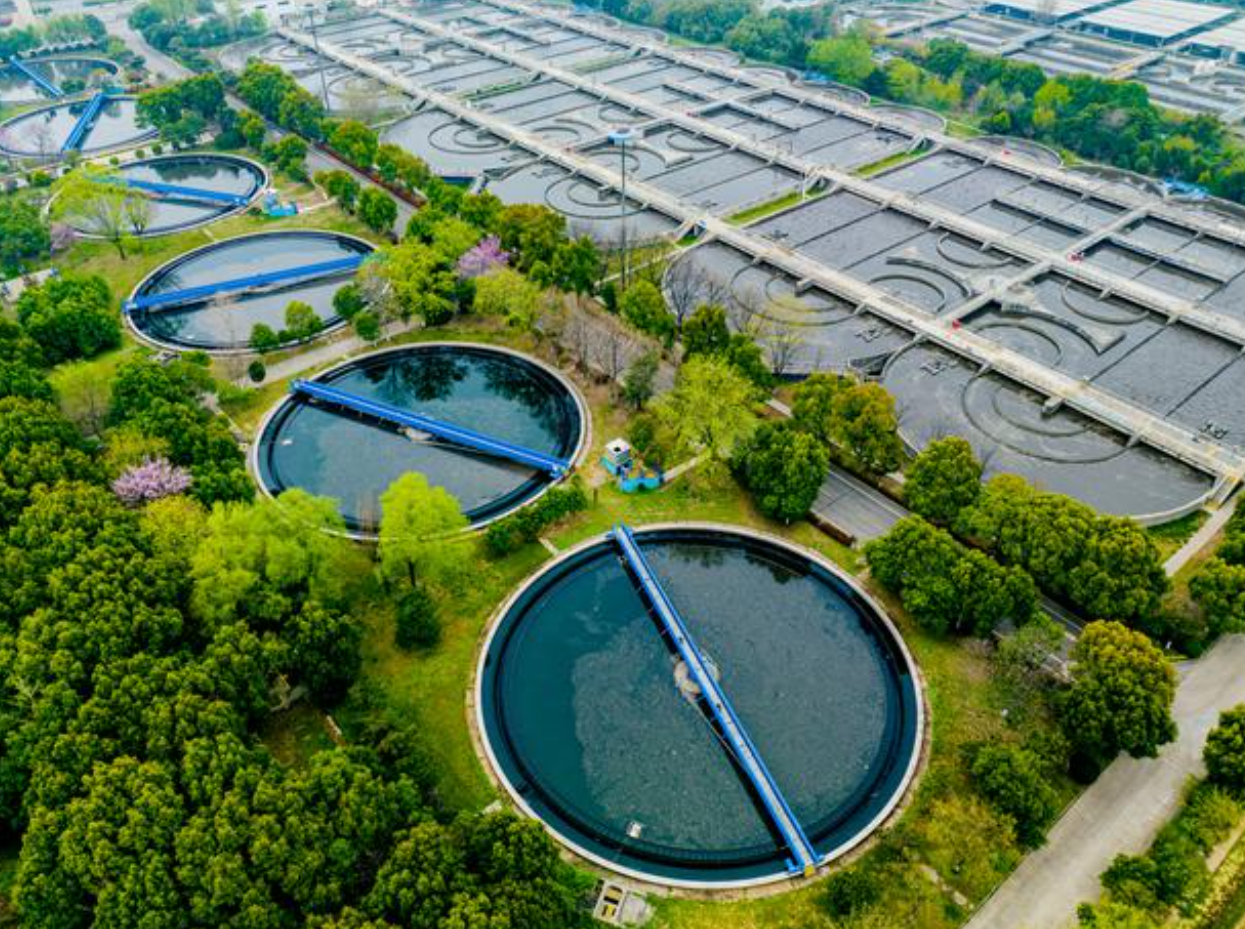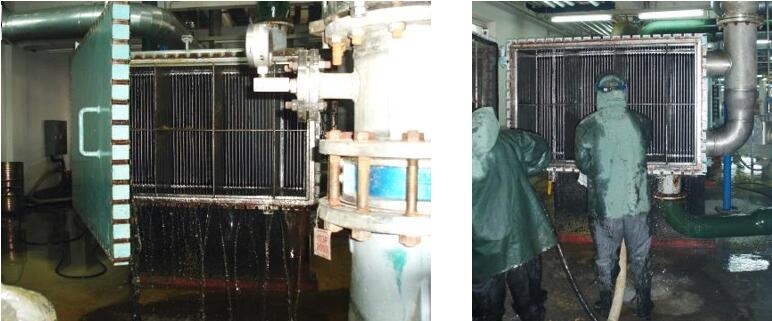English Version
Wastewater treatment is a critical process to protect the environment and public health. The process involves multiple stages, each employing different methods to remove pollutants from the water to meet environmental discharge standards. Heat transfer and temperature control are vital in these processes, making the selection of appropriate heat exchangers essential. Below is a detailed explanation of wastewater treatment processes and the application of heat exchangers, along with their advantages and disadvantages.

Wastewater Treatment Process Overview
1.Pre-treatment
● Description: Pre-treatment involves physical methods to remove large particles and floating debris from the wastewater to protect subsequent treatment equipment. Key equipment includes screens, grit chambers, and equalization basins.
● Function: Removes suspended solids, sand, and large debris, homogenizes water volume and quality, and adjusts pH levels.
2.Primary Treatment
● Description: Primary treatment mainly uses sedimentation tanks to remove suspended solids from the wastewater through gravity settling.
● Function: Further reduces suspended solids and some organic matter, easing the load on subsequent treatment stages.
3.Secondary Treatment
● Description: Secondary treatment primarily employs biological methods, such as activated sludge processes and Sequencing Batch Reactors (SBR), where microorganisms metabolize and remove most of the organic matter, nitrogen, and phosphorus.
● Function: Significantly reduces organic content and removes nitrogen and phosphorus, improving water quality.
4.Tertiary Treatment
● Description: Tertiary treatment further removes residual pollutants after secondary treatment to achieve higher discharge standards. Common methods include coagulation-sedimentation, filtration, adsorption, and ion exchange.
● Function: Removes trace pollutants, suspended solids, and organic matter, ensuring the treated water meets stringent standards.
5.Sludge Treatment
● Description: Sludge treatment reduces the volume of sludge and stabilizes organic matter through processes like thickening, digestion, dewatering, and drying. Treated sludge can be incinerated or composted.
● Function: Reduces sludge volume, lowers disposal costs, and recovers resources.
Application of Heat Exchangers in Wastewater Treatment
1.Anaerobic Digestion
● Process Point: Digesters
● Application: Welded plate heat exchangers are used to maintain the optimal temperature (35-55℃) in anaerobic digesters, promoting microbial activity and organic matter degradation, resulting in biogas production.
● Advantages:
·High Temperature and Pressure Resistance: Suitable for the high-temperature environment of anaerobic digestion.
·Corrosion Resistance: Made of corrosion-resistant materials, ideal for handling corrosive sludge.
·Efficient Heat Transfer: Compact structure, high heat transfer efficiency, enhancing anaerobic digestion performance.
● Disadvantages:
·Complex Maintenance: Cleaning and maintenance are relatively complex, requiring specialized skills.
·High Initial Investment: Higher initial cost compared to gasketed heat exchangers.
2.Sludge Heating
● Process Points: Sludge thickening tanks, dewatering units
● Application: Both gasketed and welded plate heat exchangers are used to heat sludge, improving dewatering efficiency.
● Advantages:
·Gasketed Heat Exchanger:
·Easy Disassembly and Cleaning: Convenient maintenance, suitable for relatively clean sludge.
· Good Heat Transfer Performance: Flexible design, allowing adjustment of heat exchange area.
·Welded Heat Exchanger:
·High Temperature and Pressure Resistance: Suitable for high-temperature and high-pressure environments, effectively handling viscous and corrosive sludge.
·Compact Structure: Space-saving with high heat transfer efficiency.
● Disadvantages:
·Gasketed Heat Exchanger:
·Gasket Aging: Requires periodic gasket replacement, increasing maintenance costs.
·Not Suitable for High Temperature and Pressure: Shorter lifespan in such environments.
·Welded Heat Exchanger:
·Complex Cleaning and Maintenance: Requires professional skills for operation.
·High Initial Investment: Higher purchase and installation costs.
3.Bioreactor Temperature Control
● Process Points: Aeration tanks, biofilm reactors
● Application: Gasketed plate heat exchangers control the temperature in bioreactors, ensuring optimal microbial metabolic conditions and improving organic matter degradation efficiency.
● Advantages:
·High Heat Transfer Efficiency: Large heat exchange area, quickly adjusts temperature.
·Easy Maintenance: Convenient disassembly and cleaning, suitable for processes requiring frequent maintenance.
● Disadvantages:
·Gasket Aging: Requires periodic inspection and replacement, increasing maintenance costs.
·Not Suitable for Corrosive Media: Poor resistance to corrosive media, necessitating the use of more resistant materials.
4.Process Cooling
● Process Point: High-temperature wastewater inlet
● Application: Gasketed plate heat exchangers cool high-temperature wastewater to protect subsequent treatment equipment and improve treatment efficiency.
● Advantages:
·Efficient Heat Transfer: Large heat exchange area, quickly reduces wastewater temperature.
·Compact Structure: Space-saving, easy to install and operate.
·Easy Maintenance: Convenient disassembly and cleaning, suitable for large flow wastewater treatment.
● Disadvantages:
·Gasket Aging: Requires periodic gasket replacement, increasing maintenance costs.
·Not Suitable for Highly Corrosive Media: Poor resistance to corrosive media, necessitating the use of more resistant materials.
5.Hot Water Washing
● Process Point: Grease removal units
● Application: Welded plate heat exchangers are used for washing and cooling high-temperature and oily wastewater, removing grease and improving treatment efficiency.
● Advantages:
·High Temperature and Pressure Resistance: Suitable for high-temperature and high-pressure environments, handling oily and high-temperature wastewater effectively.
·Strong Corrosion Resistance: Made of high-quality corrosion-resistant materials, ensuring long-term stable operation.
·Efficient Heat Transfer: High heat transfer efficiency, quickly reducing wastewater temperature and removing grease.
● Disadvantages:
·Complex Maintenance: Cleaning and maintenance are relatively complex, requiring specialized skills.
·High Initial Investment: Higher initial cost compared to gasketed heat exchangers.

Conclusion
In wastewater treatment, selecting the appropriate heat exchanger is crucial for process efficiency and effectiveness. Gasketed plate heat exchangers are suitable for processes requiring frequent cleaning and maintenance, while welded plate heat exchangers are ideal for high-temperature, high-pressure, and highly corrosive environments.
Shanghai Plate Heat Exchange Equipment Co., Ltd. is a professional heat exchanger manufacturer, offering various types of plate heat exchangers to meet the needs of different wastewater treatment processes. Our products feature efficient heat transfer, compact structure, and easy maintenance, providing customers with reliable and efficient heat exchange solutions.
If you have any questions or need more information, please feel free to contact us. We are committed to providing you with the best service.
Let us work together to contribute to environmental protection and create a better future!
Post time: May-20-2024

